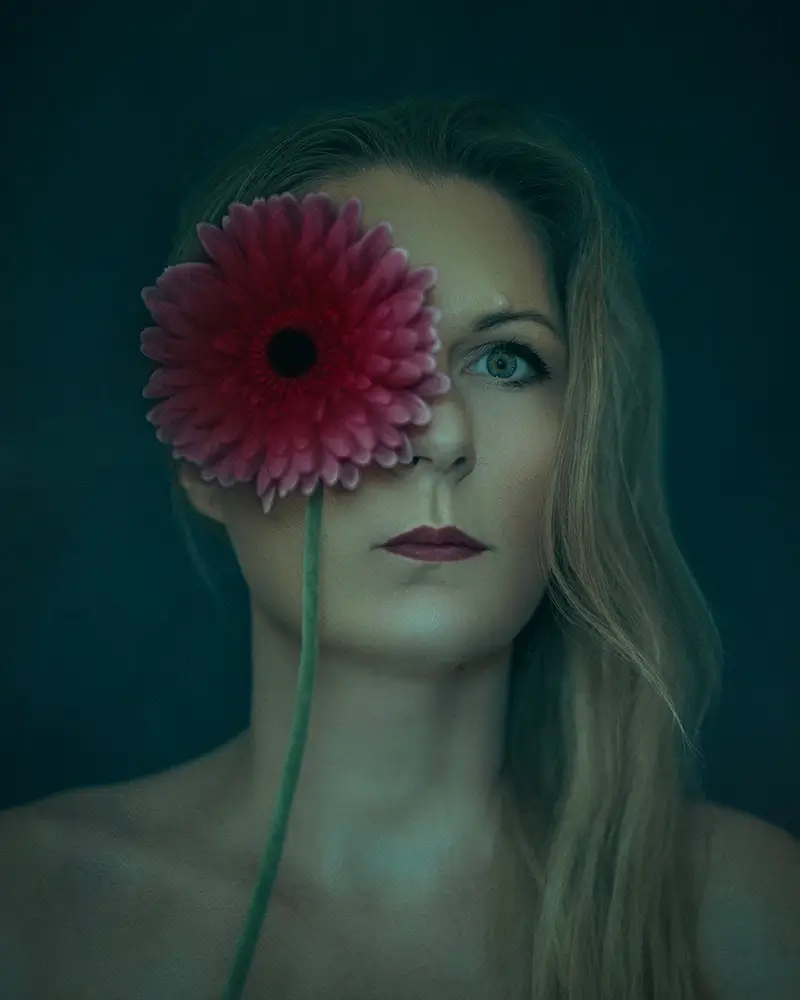Anna Matysiak, born in 1978, is an independent photographer working in the fine art style. With a keen eye for detail and an innate ability to convey emotion, she particularly enjoys capturing the essence of her subjects through portrait photography. Although her educational background is in economics, her passion for the arts led her to fully immerse herself in the world of photography, a journey she began in 2020. In addition to her striking portraits, Anna's portfolio showcases an impressive array of conceptual and nude photography, highlighting her versatility and creative vision. Her work has gained significant recognition, with photographs exhibited in prestigious venues across the globe, including Tucson in the United States, London in the United Kingdom, Vien in Austria, Siena in Italy and Szczecin in Poland. Through her lens, Anna invites viewers to explore the profound beauty and complexity of the human experience. Matysiak garnering recognition in numerous prestigious international competitions. These contests were judged by a jury panel of esteemed professionals, including gallery owners, publishers, editors, and acclaimed photographers, all of whom brought a wealth of experience and expertise to their evaluations.
She has received numerous prestigious awards. In 2025, she won a bronze medal in the Tokyo International Foto Awards in the Fine Art (Other) category and a special award in the Vienna International Photography Award in the Free Subject category. In 2024, she won a bronze medal in the Fine Art category at the Chromatic Awards. In 2023, she received a gold medal in the Fine Art (Other) category at the ND Awards.
Since 2021, her works have also been awarded distinctions in the Creative Photo Awards (Siena Awards), International Photography Awards, Fine Art Photography Awards, Annual Photography Awards, and Budapest International Foto Awards.
Currently based in Szczecin, Poland.
STATEMENT:
"When I embarked on my journey into photography, my initial focus was primarily on portrait photography, capturing the essence of people as they were. However, deep down, I yearned to express more than just a straightforward depiction. As time passed, my artistic vision evolved, heavily influenced by the remarkable artists I held in high regard— distinguished photographers and talented painters whose works stirred something within me. I increasingly felt compelled to illustrate people and places through my lens, revealing how I perceive their beauty and intricacies. My aim was to highlight my subjects' hidden depths, enabling them to resonate with viewers on a reflective level.
In the present day, my creative process often revolves around symbolism. I cherish the notion that viewers can engage with my images, pondering their meanings and engaging in conversations about them. The nature of my work is significantly shaped by my surroundings. Every photograph I take is a product of the environment and the individuals I encounter throughout my journey. A distinct location may ignite a vision for an artistic photograph, while an intriguing individual might inspire a unique portrait. Even melodies in my surroundings can trigger the imagery I wish to convey and the narratives I long to tell.
When approaching the creation of conceptual photography, I immerse myself in meticulous preparation. Each detail is carefully curated to ensure the final presentation aligns with my artistic intent. While the subject matter varies widely, a common thread runs through all my work: capturing the viewer's attention enough to provoke thought and facilitate the discovery of more profound messages.
Photography is not just a pursuit for me - it is a rofound passion that fills my heart with joy. This joy magnifies with the reach of
my audience. Each accolade, award, and exhibition serves as wings that propel me forward, motivating me to delve deeper into my art. I believe that every artist crafts their work with an audience in mind. As I maintain a critical eye on my creations, the praise and recognition I receive from esteemed figures in the photographic world inspire me to elevate my craft, embrace new challenges, and continue this exhilarating journey of self-expression."
